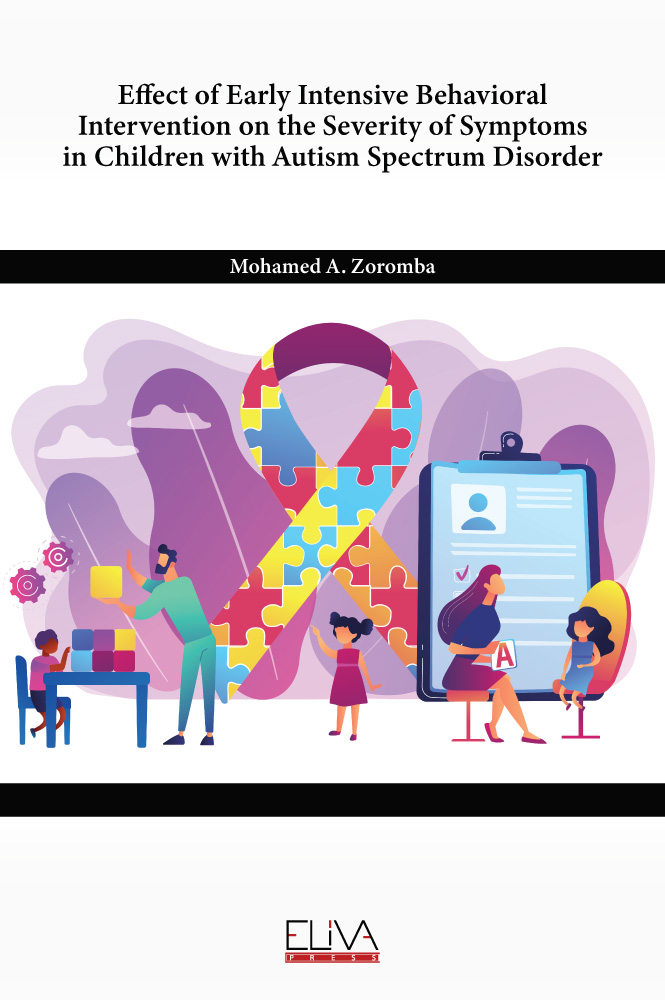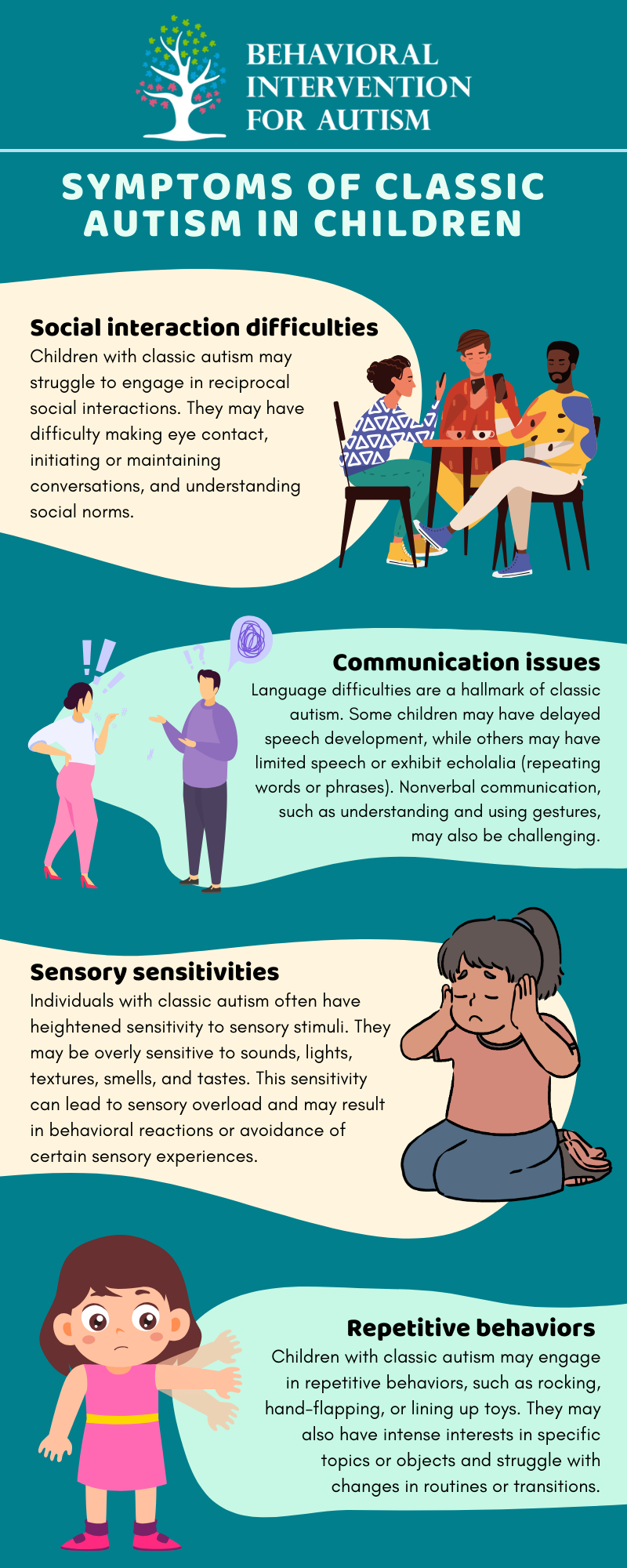Turning challenges into growth using Autism Behavioral Therapy tools
Recognizing the Impact of Behavioral Autism on Daily Life and Social Interactions
You could not understand just how deeply behavioral autism impacts day-to-day live and social communications. People on the range commonly browse a world loaded with interaction difficulties and sensory overload. These difficulties can result in frustration and isolation, influencing their partnerships and overall well-being. Understanding these nuances is essential for fostering supportive settings. What strategies can we carry out to create more meaningful links and inclusive spaces? The answers may amaze you.
Defining Behavior Autism and Its Qualities
Behavioral autism, frequently referred to as autism spectrum disorder (ASD), includes a series of conditions identified by challenges in social interaction, interaction, and recurring behaviors. You could discover that people with ASD typically have a hard time to analyze social cues, which can cause misunderstandings in conversations. They may locate it tough to develop eye call or engage in little talk, making social scenarios feel frustrating.
Interaction troubles can show up in different means, from postponed speech advancement to a preference for using less words. By identifying these traits, you can promote an atmosphere that promotes approval and encourages effective interaction, aiding people with autism prosper in their everyday interactions.
The Spectrum of Autism: Recognizing Irregularity in Habits
Autism spectrum problem (ASD) isn't a one-size-fits-all medical diagnosis; it varies widely amongst individuals. You might notice that some people with ASD show moderate signs, while others may encounter more significant obstacles. This variability can materialize in behaviors, passions, and sensory sensitivities. You might run into people who are extremely spoken and engage quickly in discussions, while others might favor solitary activities or interact non-verbally.
Furthermore, the way people with ASD react to sensory input can differ greatly; some could be overwhelmed by brilliant lights or loud sounds, whereas others thrive in promoting settings. The spectrum additionally includes distinctions in social communications; some people may battle to interpret social signs, while others navigate social settings with relative simplicity. Understanding this variability is necessary, as it helps you value everyone's distinct experience and dressmaker assistance to their certain needs, promoting an extra comprehensive environment for everybody.
Communication Difficulties Encountered by Individuals With Autism
When you interact with individuals on the autism range, you might notice their special interaction challenges. They usually face problems with both nonverbal and spoken signs, which can impact their social interactions. Recognizing these obstacles is important for promoting better connections and assistance.

Verbal Communication Problems
Several people on the autism range experience spoken interaction problems that can significantly affect their daily interactions. You might find it challenging to express your thoughts, feelings, or needs plainly. This can bring about stress for both you and those around you, as misconceptions take place. You might struggle with launching discussions, keeping a subject, or understanding nuances in speech. Commonly, you could prefer utilizing straightforward language or repetitive phrases, which can limit your capability to participate in much deeper conversations. Your tone, speed, or quantity might not align with social assumptions, triggering others to misinterpret your intents. Acknowledging these difficulties can aid you and your assistance network create methods to enhance interaction and foster better links with others in your life.
Nonverbal Communication Obstacles
Verbal interaction isn't the only challenge people on the autism spectrum face; nonverbal communication obstacles can be just as significant. You could locate it tough to analyze body language, faces, and eye contact, which are essential for efficient interaction. These challenges can bring about misconceptions or misinterpretations of social signs, making communications feel frustrating or complex. You may have a hard time to express your own emotions with nonverbal methods, leaving others uncertain of your sensations or intentions. This separate can develop feelings of isolation and stress. Recognizing these barriers is essential for cultivating understanding and empathy in your interactions. By resolving nonverbal communication, you can discover strategies to boost your social experiences and boost your total lifestyle.
Social Communication Impacts
Social communications can typically feel frustrating due to the special communication obstacles faced by people with autism. Identifying these challenges can aid you locate techniques to improve interaction, such as exercising social abilities in safe setups or utilizing visual aids. Comprehending your needs enables you to navigate social interactions with higher confidence and simplicity.
Social Communication and Partnership Structure in Autism
While building relationships can be testing for people with autism, comprehending their special viewpoints and interaction designs can promote significant links. You might see that many individuals on the range prefer direct interaction and might have a hard time with social cues or tiny talk. By being straightforward in your communications, you can help develop an atmosphere where they really feel comfortable.
Make the effort to pay attention and observe exactly how they reveal themselves. This insight can direct you in guiding discussions better. Participating in shared rate of interests can likewise act as a bridge to much deeper connections. Whether it's a pastime, a favorite show, or a mutual passion, these typical strings can open doors to relationship.
Daily Life Regimen: Browsing Obstacles and Techniques
Maneuvering day-to-day life routines can be especially challenging for individuals with autism, especially when unanticipated changes occur. You might locate convenience in having an organized routine, as it assists you anticipate what's next. When disruptions take place, it's typical to feel overwhelmed or anxious. To navigate these obstacles, take into consideration applying aesthetic schedules or lists. These tools can provide quality and peace of mind.
Establishing a regimen that includes sensory breaks can additionally be helpful. You can prepare time-outs throughout your day to recharge. It's essential to connect with those around you, letting them understand your preferences and needs. This aids develop an understanding atmosphere.
Finally, practice mindfulness methods to take care of anxiety and anxiousness. Simple breathing exercises or grounding strategies can make a substantial distinction. By incorporating these techniques, you can enhance your everyday regimen and decrease disruptions, making life feel a lot more manageable.
Staminas and Capabilities of Individuals on the Autism Spectrum
Comprehending everyday life regimens is simply one element of the autism experience. Many individuals on the autism range possess exceptional staminas and capacities that establish them apart. You could discover that your interest to detail is remarkable, permitting you to succeed in tasks that need precision and focus. Your capability to assume outside package can bring about cutting-edge remedies in numerous scenarios.
Furthermore, your memory skills commonly radiate, particularly in areas of rate of interest. Autism Behavioral Therapy. This knack for retaining information can make you a beneficial source in fields like art, modern technology, or scientific research. You might also exhibit solid visual thinking, allowing you to envision complicated concepts and address issues artistically
Additionally, your distinct viewpoint on Get More Info the globe can foster compassion and understanding in others, enriching social interactions. Welcoming these strengths not just improves your self-confidence yet additionally helps others value the diverse abilities you bring to the table.
Developing Inclusive Environments for People With Autism
Producing inclusive environments for individuals with autism starts with developing sensory-friendly areas that provide to their distinct needs. You can Related Site likewise cultivate chances for social interaction, assisting to build links and relationships. By making these modifications, you'll contribute to a more welcoming ambience for everyone.
Designing Sensory-Friendly Spaces
While making sensory-friendly rooms, it's essential to review the one-of-a-kind needs of people with autism. Beginning by choosing soothing colors and soft lights to create a calming setting. When overwhelmed, integrate peaceful zones where individuals can retreat and reenergize. You'll desire to decrease loud noises and disturbances, using soundproof products or white sound machines to help preserve peace. Think about responsive aspects like soft materials or fidget-friendly things that can offer comfort. Determine that rooms are adaptable, allowing for easy rearrangement to fit different tasks. Consist of aesthetic timetables or clear signage to aid people browse the room with confidence. By attentively incorporating these elements, you can develop a welcoming ambience that sustains sensory needs and promotes general well-being.
Advertising Social Interaction Opportunities
Designing sensory-friendly rooms not only addresses private convenience but likewise establishes the stage for purposeful social interactions among people with autism. Encourage peer mentoring, matching individuals with autism with helpful peers that can lead them via social situations. By applying these strategies, you can improve social possibilities, helping people with autism construct friendships and enhance their social abilities in a safe, inviting setting.

Often Asked Inquiries
Just How Can Pals Support Somebody With Behavioral Autism?
You can support a close friend with behavior autism by holding your horses, paying attention actively, and appreciating their boundaries. Participate in activities they delight in, interact freely, and produce a comfy setting where they really feel valued and comprehended.
What Resources Are Offered for Moms And Dads of Kid With Autism?
You can discover various sources for parents of children with autism, consisting of assistance groups, educational web sites, and regional social work. Attaching with various other moms and read this article dads can likewise provide beneficial understandings and shared experiences to assist navigate obstacles.
Can Behavioral Autism Change With Time?

Yes, behavior autism can alter with time. You might see shifts in interaction, social skills, and actions as your child grows. Early treatment and assistance usually play essential functions in these developing modifications.
Just How Do Sensory Level Of Sensitivities Impact Daily Life?
Sensory sensitivities can make day-to-day experiences overwhelming. You may fight with loud noises or brilliant lights, resulting in tension or avoidance. Finding settings that fit your requirements can greatly enhance your comfort and overall every day life.
What Are Usual Misconceptions Concerning Behavioral Autism?
You could think behavior autism only impacts communication skills, but it's more complicated. Several think people lack empathy or knowledge, which isn't real. Recognizing these misconceptions helps foster acceptance and support for those on the spectrum.
Behavior autism, typically referred to as autism spectrum condition (ASD), incorporates an array of conditions identified by obstacles in social communication, interaction, and recurring actions.Social communications can commonly feel overwhelming due to the unique interaction obstacles faced by individuals with autism.Creating sensory-friendly spaces not only addresses individual convenience yet additionally sets the stage for meaningful social communications among people with autism. Urge peer mentoring, coupling people with autism with encouraging peers who can guide them via social situations. By executing these methods, you can boost social possibilities, assisting individuals with autism build relationships and enhance their social skills in a risk-free, welcoming atmosphere.